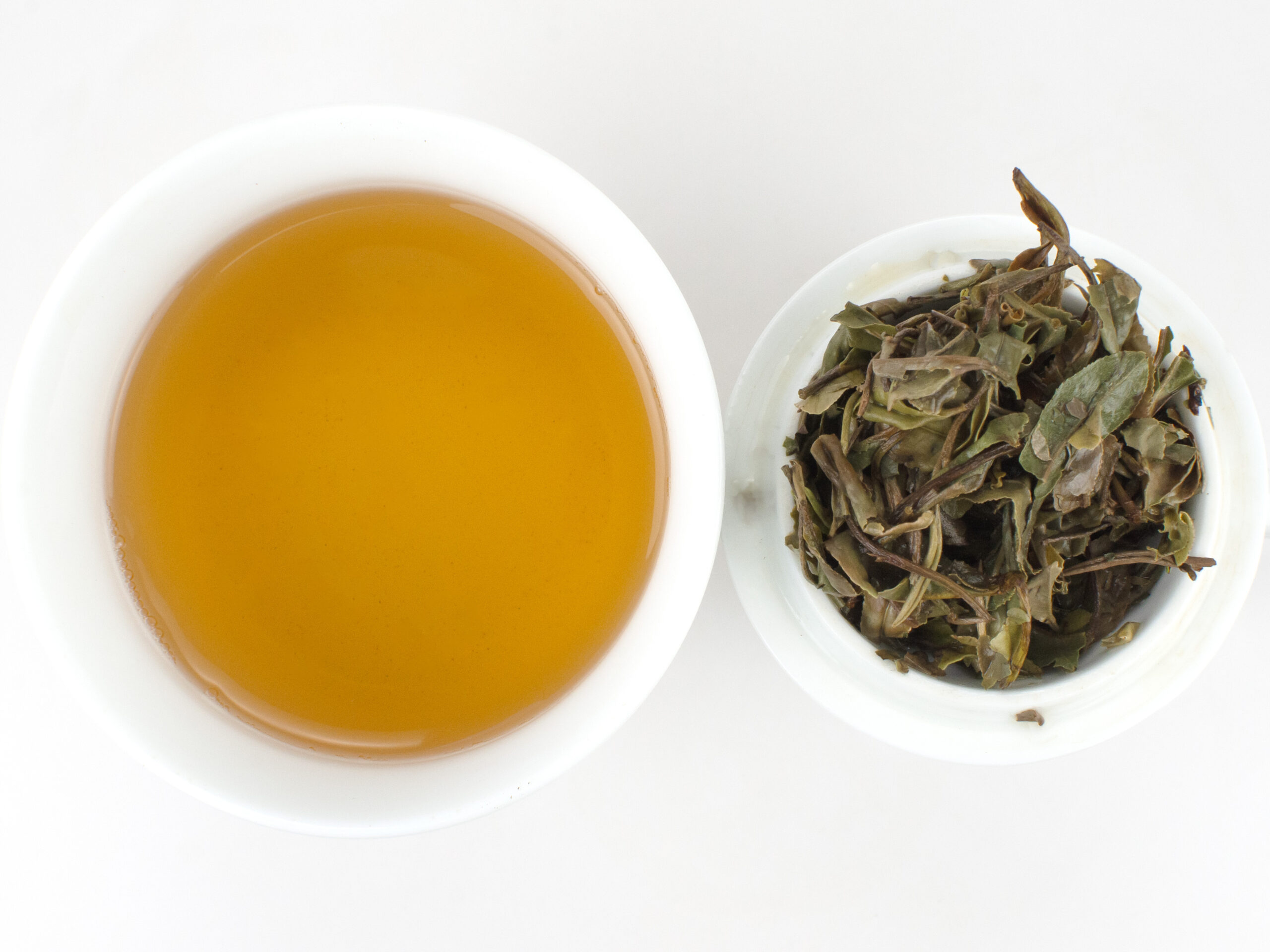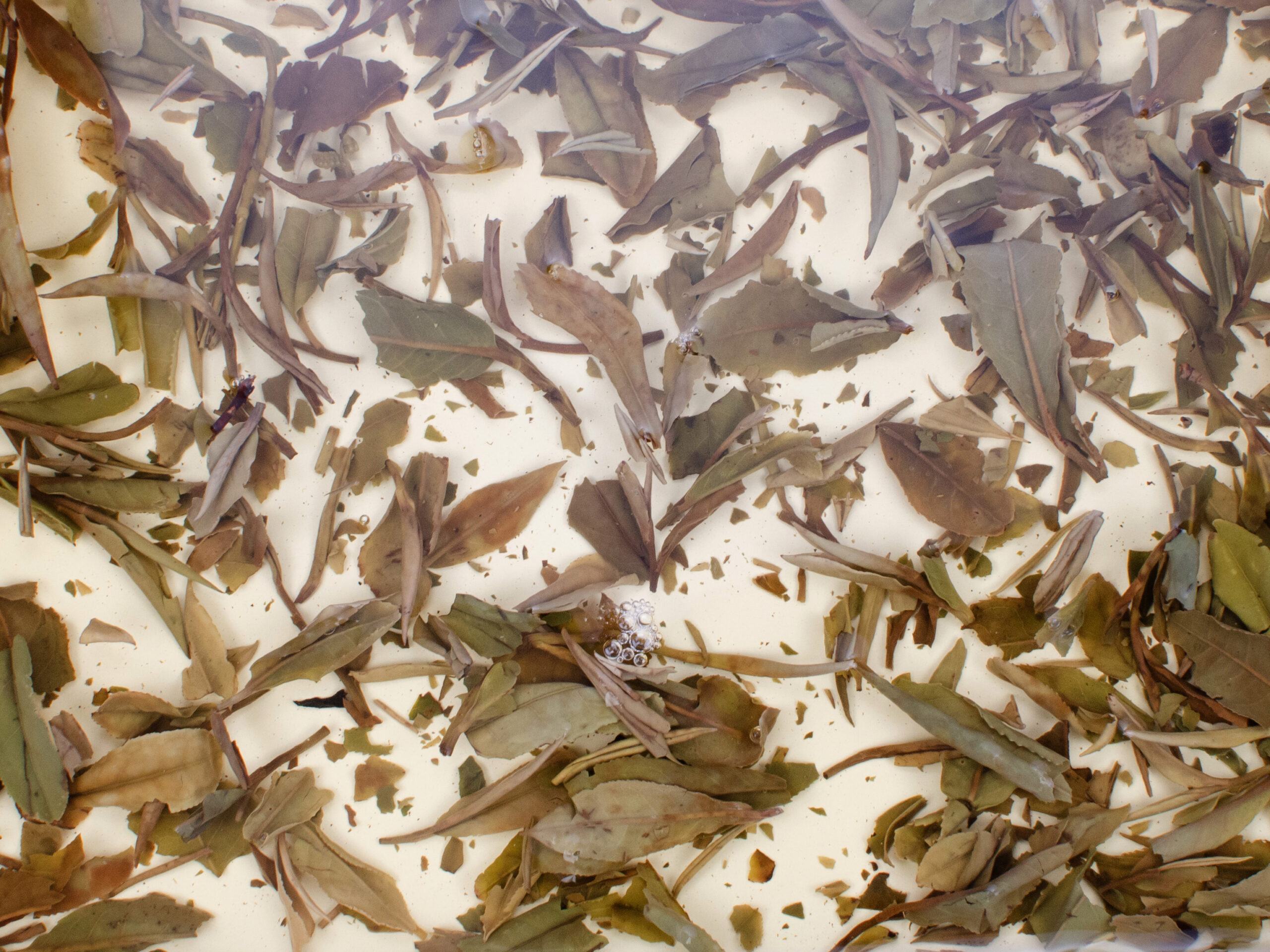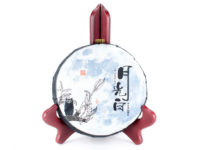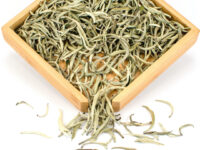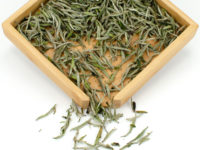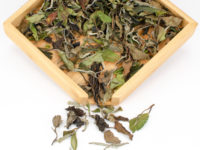Gong Mei (Aged Tribute White)
Organic White Tea 2015
Gong Mei is a rich, mostly-leaf, aged white tea made from the seed-grown heirloom tea bushes of an old Fujian tea garden. Its smooth, complex flavor has noticeably darkened over time, acquiring notes of dark fruit and a foresty touch of pine needle.
$20.00
- Tea Origin
- Shaowu City, Fujian Province, China
- Tea Bush
- Quntizhong (Heirloom Tea Bush)
- Tea Maker
- Chen Qingwen
- Harvest Time
- Early April
- Plucking Standard
- One bud, two leaves
Prior to importing this aged white tea in 2023, this Gong Mei was personally stored and aged by its producer Mr. Chen Qingwen in Shaowu, Fujian.
Originally, white tea was invented in the 1700s as an herbal remedy in rural northern Fujian Province. Gong Mei recreates the flavor of these original white teas made from the local tea plants. Instead of the popular modern white tea cultivars that have dominated the market since the 1970s, the complexity flavor you get from these diverse heirloom tea bushes is unmatched by any single-bush cultivar.
The original white teas from Northern Fujian

As it started out, white tea was the informal kind of tea a country family could make from the tea bush in their yard for personal use. They could simply pick the leaves and lay them out to dry like any other herb.
Even now, the refined technique for making white tea is very simple. It involves withering the leaves until they lose 80-90% of their moisture and then completing the drying process with some kind of roasting. Because of the slow pace of the natural air drying, a little bit of oxidation happens in the process.
While white tea’s final roasting brings the tea to shelf stability, it still continues to oxidize very slightly as it ages. As the leaf darkens, aged white tea displays new and darker flavors, and unique aged aromatics arise. One such highly unusual fragrance is the cool or “minty” aroma that begins to appear over time, creating a cooling sensation and a character like lotus leaves or the breeze over a lotus pond.
A traditional herbal remedy

Long recognized in folk medicine for its strong anti-inflammatory properties, white tea has always been used for medicinal purposes in its place of origin. This follows a long tradition in the greater history of Chinese tea. Legend holds that tea itself was first discovered and used as an antidote to poisons and a tonic to refresh the body and mind.
Every region of China has its own local medicinal plants preferred by herbalists, but the Northern Fujian mountains were not as famous for healing herbs as the mountains and forests of Western China. However, there was a tea cultivar found in the crags of those low mountains that had a reputation locally for treating diseases that manifested in skin infection symptoms, like measles, chickenpox, and acne.
The local herbalists reasoned that, if it were processed like an herb, tea would be more effective as a medicine. With the increased international demand for one of Fujian’s other big inventions, black tea, there was a market for white tea in treating the growing numbers of people who got sick as trade traffic rose. As this technique quickly spread to other provinces, we can assume that it was found effective. Anecdotally, local herbalists believe that aging the tea enhances its anti-inflammatory cooling effect. Teas aged for seven years or more are thought to be especially good in this respect.
White tea cultivars new and old
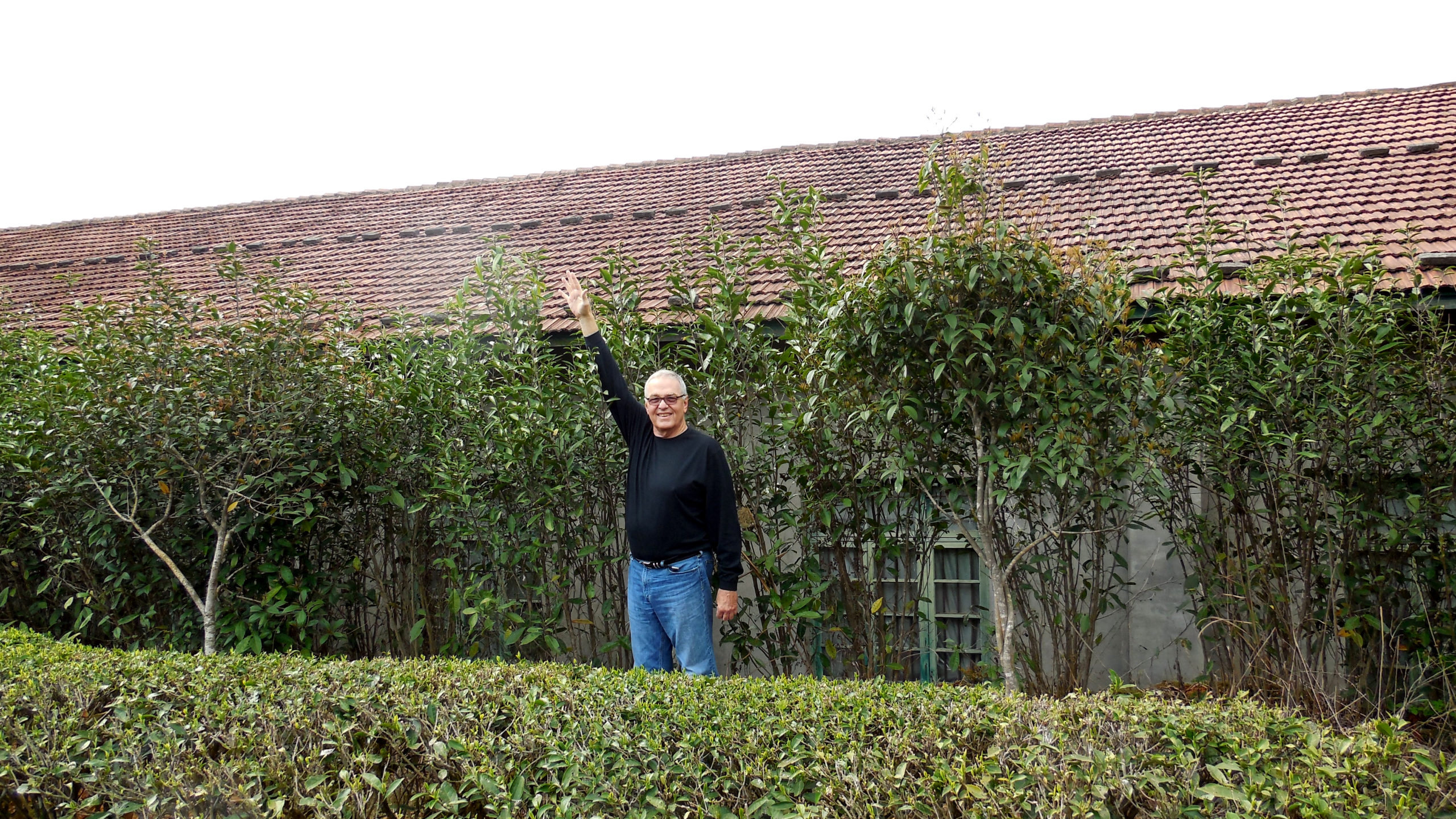
In a tea as minimally processed as white tea, the cultivar has a pronounced influence on the character of the final tea. Each genetically distinct tea bush has a unique balance of flavor and aroma precursors that contribute to what you taste in your cup.
When white tea’s popularity exploded in the 2000s, the Dahao (Big Hair) and Dabai (Big White) cultivars began to dominate Fujian’s white tea gardens. They were specially selected as ideal cultivars for white tea due to Dahao’s plentiful silvery white down and Dabai’s enormous fat bud size. As they were heavily promoted by the government since the 1970s, they largely replaced the old heirloom seed-planted bushes (quntizhong) that white tea was originally made from, known locally as “xiao caicha” — literally, “little vegetable tea,” after the fact that they were originally grown in people’s home gardens like other vegetables.
Like most heirloom crops, the increased genetic diversity of these heirloom tea plants yields an inimitable complexity of flavor. Contrary to the trend of individual cultivar promotion for maximum yield in today’s agricultural age, white tea made from the heirloom bushes that survived the mass propagation of the (admittedly delicious) heavyweights Dahao and Dabai has become especially prized.
A true heirloom tea
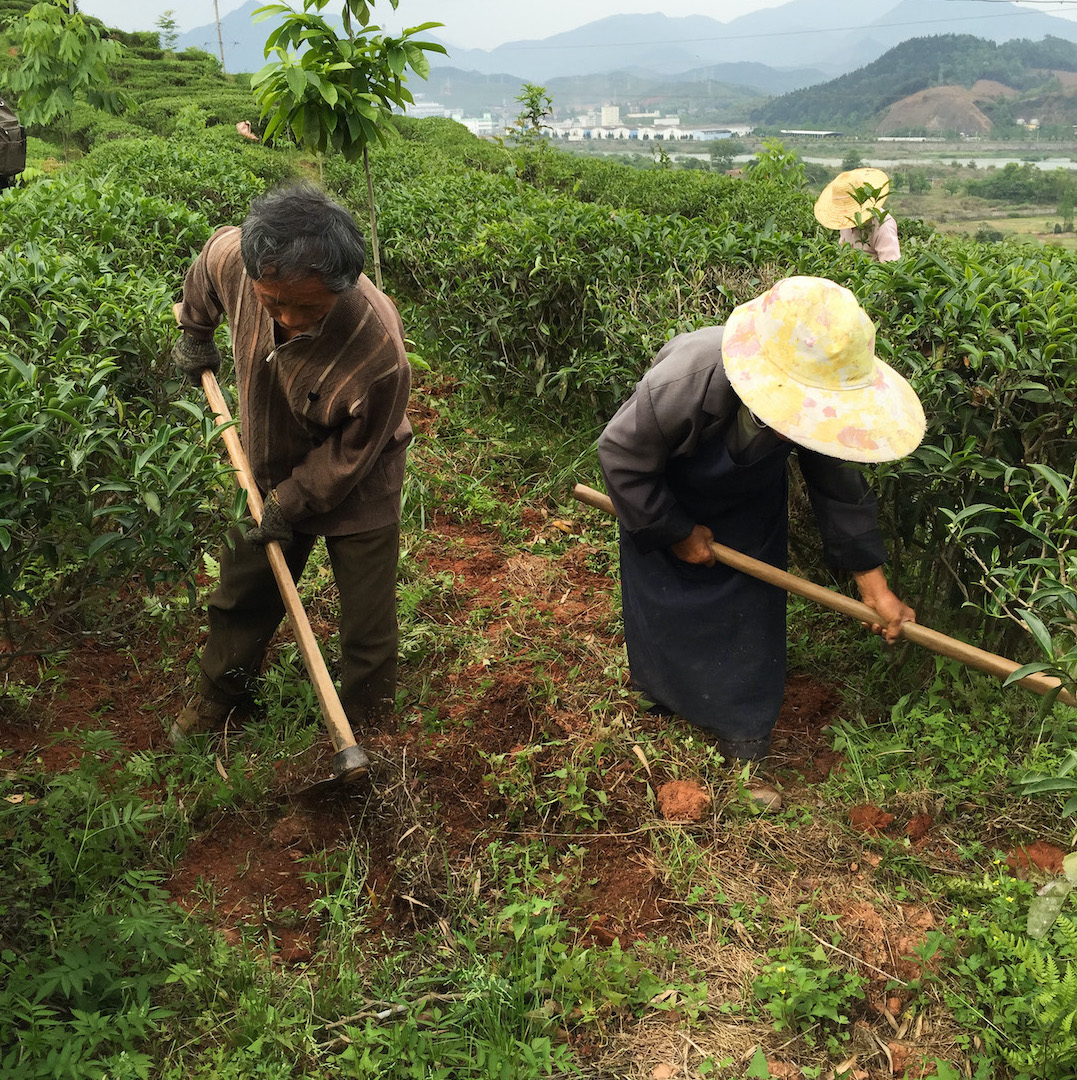
Drinker appreciation for heirloom tea varieties still struggles to support the more difficult and expensive cultivation and processing labor required to grow and make them. As the ever-changing tea industry shifts, the Chinese government is beginning to realize the importance of these diverse cultivars. However, tea makers like Gong Mei’s maker, Chen Qingwen, are already beginning to benefit from having balanced the history of tradition with the innovation of the modern tea industry.
Mr. Chen’s gardens at Lüyuan Tea Company are a snapshot in time. They are not only planted with Dahao and Dabai, but also with the old heirloom caicha bushes from that region of Shaowu City. The proportion of heirloom plantings has decreased over the years, but they still retain many of them today. Even though they were once part of the government tea factory, they are a small company and the way they process tea is very old-school.
No chemical fertilizer, pesticide, or herbicide was used in the production of this tea. Click here to read more about our promise to fair trade and the environment.


